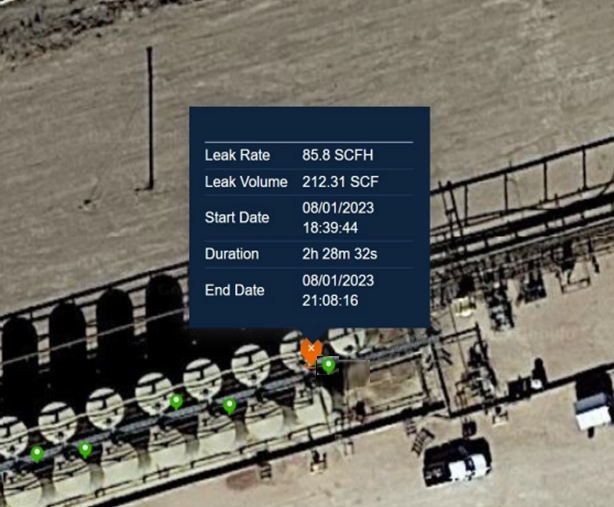Automated Reporting Software: Reducing the Cost of Emissions Compliance Through Digital Automation
Reporting emissions is a tremendous effort, often requiring a significant team to gather and compile the emissions data from hundreds or thousands of sources, and then reporting the data in multiple formats for internal use and regulatory submissions. This effort, along with the cost, will grow as regulations increase, unless digital automation is employed. MethaneTrack™ technology provides the end-to-end automation required to reduce these costs by automating each step of the process. From detecting and quantifying emissions, to aggregating the data, to automatically creating reports customized for your needs, the MethaneTrack™ technology provides an immediate, comprehensive solution from your desktop. By automatically measuring, analyzing, and summarizing the emissions with secure, cloud-based software, the system streamlines the workflow using the latest sensors, electronics, cloud, and Information technology to minimize the cost.
Automated Emissions Tracking:
The MethaneTrack™ software automatically tracks and displays emissions to help operations personnel understand their region, simplifying the process of reducing emissions and tracking progress toward goals. This includes the following features:
- Highly flexible, user definable regions, ranging from individual sites to districts to all assets to enable users to focus on their area of responsibility.
- MethaneTrack™ sends automated alerts to the repair team and other users in accordance with their individual notification preferences for alert levels, notification methods, timing of notifications and reminder frequency. These tools automatically keep the team informed.
- A listing of each emission including the start time, emission rate, elapsed time since detected, total emission volume, the location, and the stop time (if applicable). The ability to see the event with a single click enables monitoring and repair personnel to quickly find the trouble spot.
- A color-coded visual display of the location of the leak with the colors representing four leak categories: low, medium, high, and super emitters enable team members to quickly evaluate the hot spots on their sites and in their regions.
- A listing of repaired leaks as requested by user search criteria for date ranges, leak sizes and failure causes helps track frequent failure mechanisms for continuous improvement.
- Automatic tabulation of total emissions to reduce the cost of tracking and reporting results.
- Users can export or print any of the above data to include in presentations or written reports.

Root Cause Analysis
- After repairing a leak, the team logs the root cause in the MethaneTrack™ software, enabling the software to aggregate the causes over time. With this information, the software provides root cause statistics to the operations team enabling them to understand equipment performance and operational weaknesses to further reduce emissions in the future.
- MethaneTrack™ can display the root cause of the emissions in various formats: Fugitive emissions vs. operational emissions or fugitive emissions attributable to each root cause category. Each provides hard data for continuous improvement.
Emissions Analysis
- MethaneTrack™ provides graphical displays of the emissions over time for user selected regions, which can be individual sites, groups of sites, regions (states, countries, or oil basins for example), or all emissions for the entire enterprise. MethaneTrack™ displays these statistics on user selected time scales such as month by month or quarter by quarter with direct comparison against target metrics to enable immediate assessment of measured emissions compared to your objectives.
- MethaneTrack™ automatically documents emissions averted to help judge the system performance. For example, if MethaneTrack™ detects and reports a super emitter in 1 hour compared to an average of 10 days to detect the leak with manual monitoring, then 10 days of emissions were averted (assuming identical times to stop the emission). This information is useful to promote the emission reduction progress made by the company and to obtain Carbon Credits.
- Users can export or print any of the above data to include in presentations or written reports.
Automated Reporting to Reduce the Workload
Tracking emissions manually is a tremendous effort, often requiring a significant team to estimate the total emissions with detailed calculations. The MethaneTrack™ software eliminates this expense by measuring and recording the emissions. This enables environmental officers to quantify the emissions reductions for corporate officers, customers, investors, and regulators as well as use the data to enable future reductions. By automatically measuring, analyzing, and summarizing the emissions with a secure, web-based application, the software provides immense value throughout the entire process.
